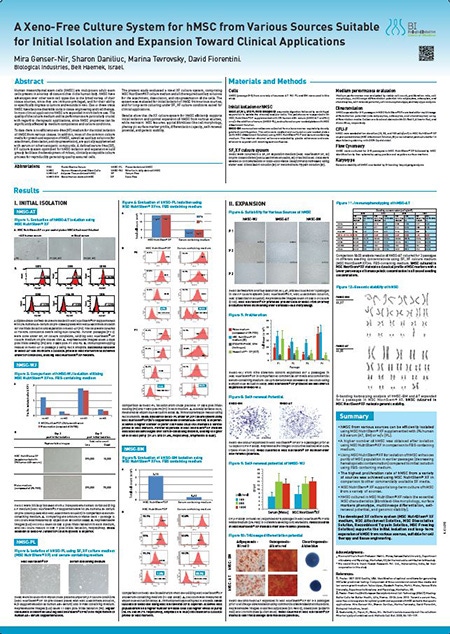Voices of Biotech
Podcast: MilliporeSigma says education vital to creating unbreakable chain for sustainability
MilliporeSigma discusses the importance of people, education, and the benefits of embracing discomfort to bolster sustainability efforts.
April 1, 2015

Sponsored by Biological Industries
Human mesenchymal stem cells (hMSC) are multipotent adult stem cells present in a variety of tissue niches in the human body. hMSC have advantages over other stem cell types due to the broad variety of their tissue sources, since they are immuno-privileged, and for their ability to specifically migrate to tumors and wounds in vivo. Due to these traits hMSC have become desirable tools in tissue engineering and cell therapy. In most clinical applications hMSC are expanded in vitro before use. The quality of the culture medium and its performance are particularly crucial with regard to therapeutic applications, since hMSC properties can be significantly affected by medium components and culture conditions.
To date there is no efficient xeno-free (XF) medium for the initial isolation of hMSC from various tissues. In addition, most of the common culture media for growth and expansion of hMSC, as well as auxiliary solutions (for attachment, dissociation, and cryopreservation), are typically supplemented with serum or other xenogenic compounds. A defined serum-free (SF), XF culture system optimized for hMSC isolation and expansion would greatly facilitate the development of robust, clinically acceptable culture process for reproducibly generating quality-assured cells.
The present study evaluated a novel xeno free culture system, comprising MSC NutriStem® XF culture medium and all the required auxiliary solutions for the attachment, dissociation, and cryopreservation of the cells. The system was evaluated for initial isolation of hMSC from various sources, and for long-term culturing under SF, XF culture conditions suited for clinical applications.
Results show that the XF culture system for hMSC efficiently supports initial isolation and optimal expansion of hMSC from various sources, while maintaining MSC features: typical fibroblast-like cell morphology, phenotypic surface marker profile, differentiation capacity, self-renewal potential, and genetic stability.
You May Also Like